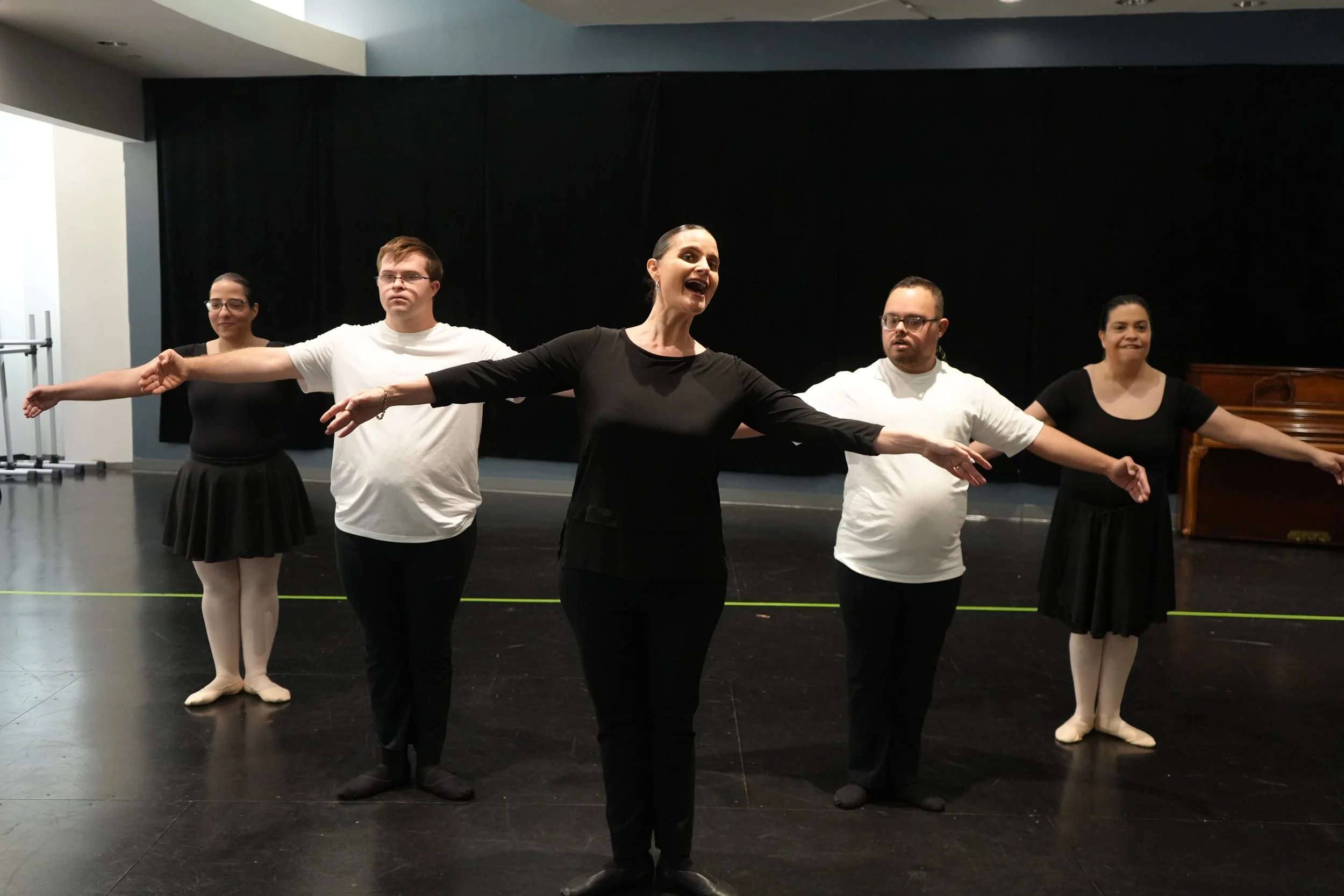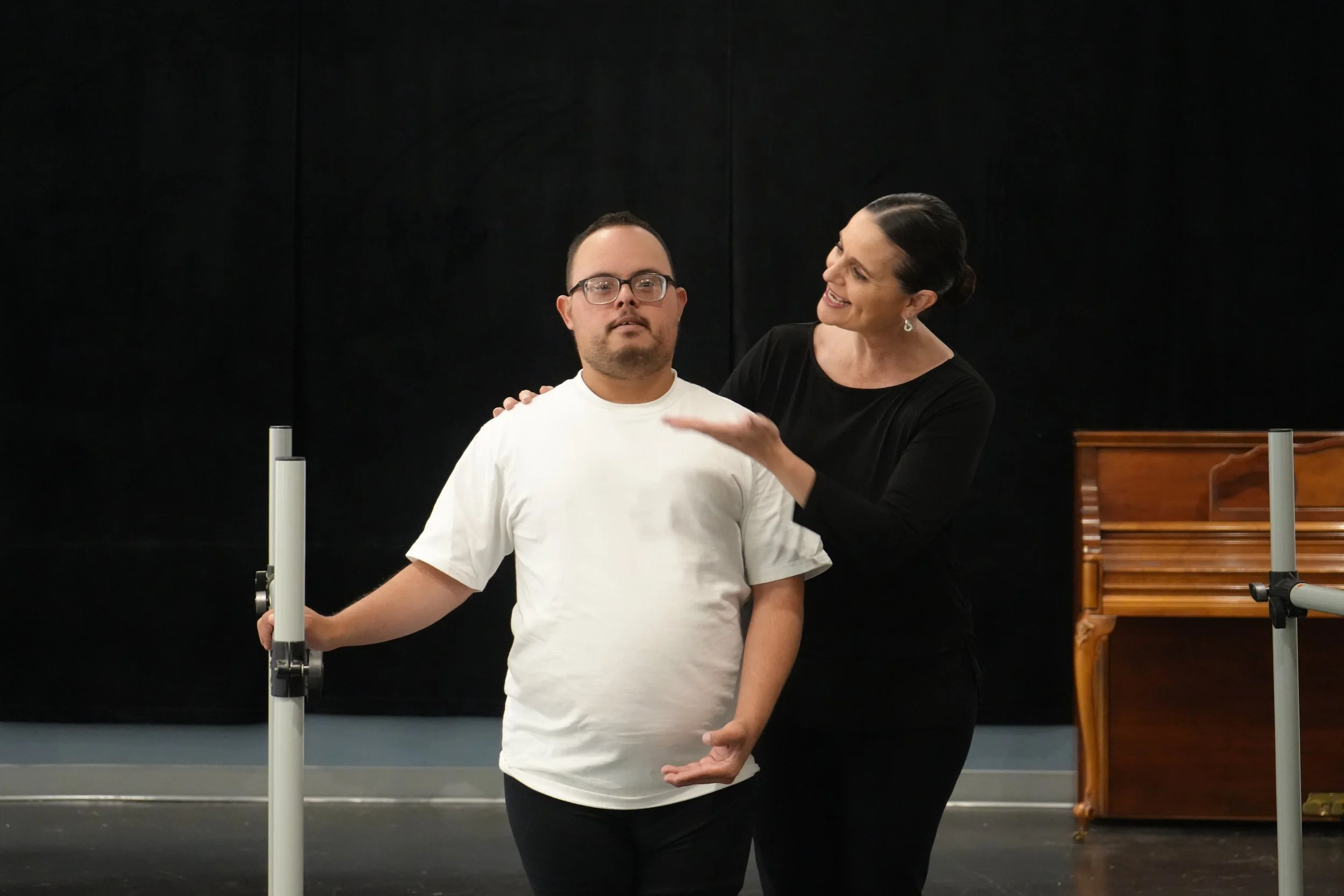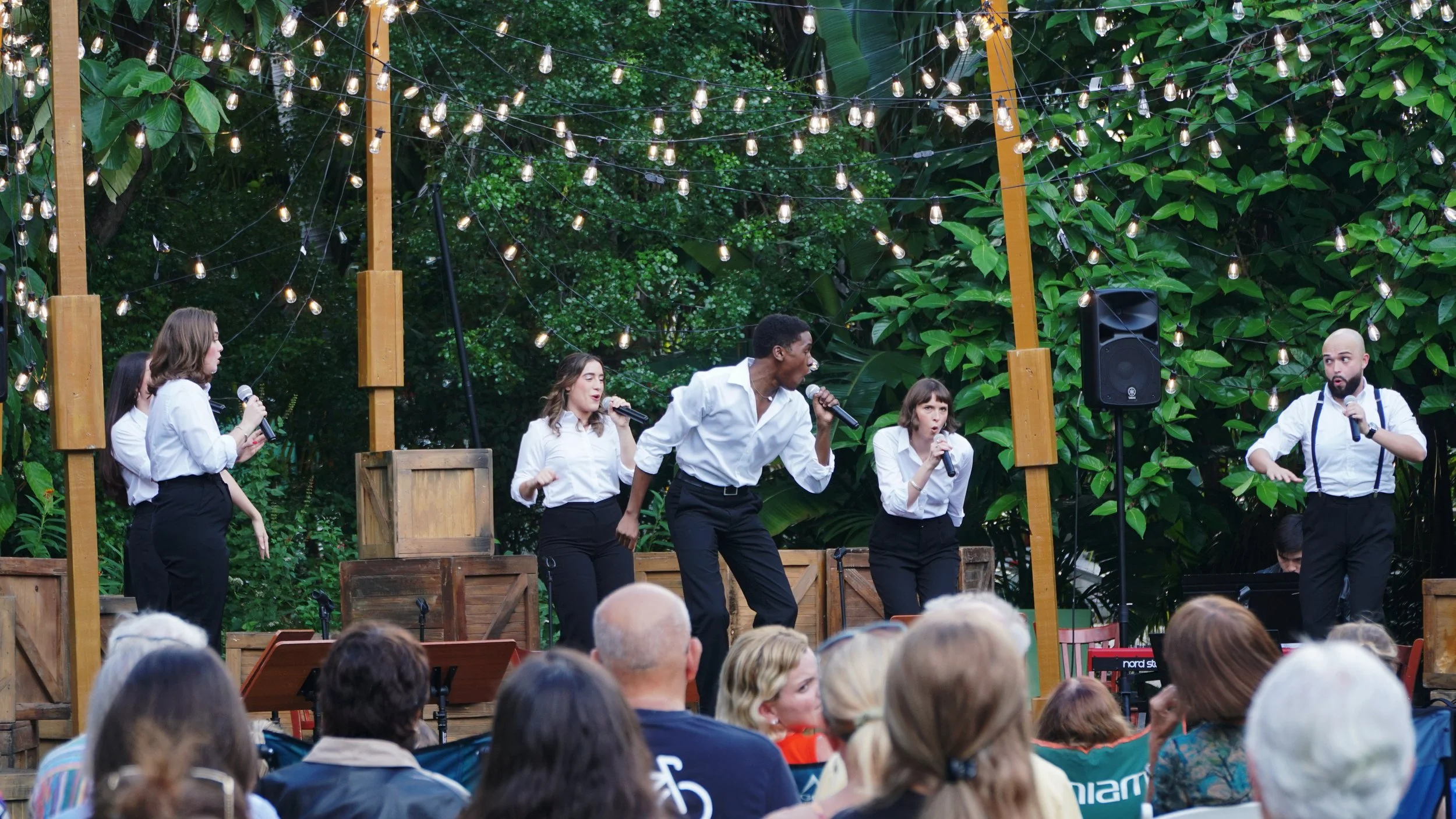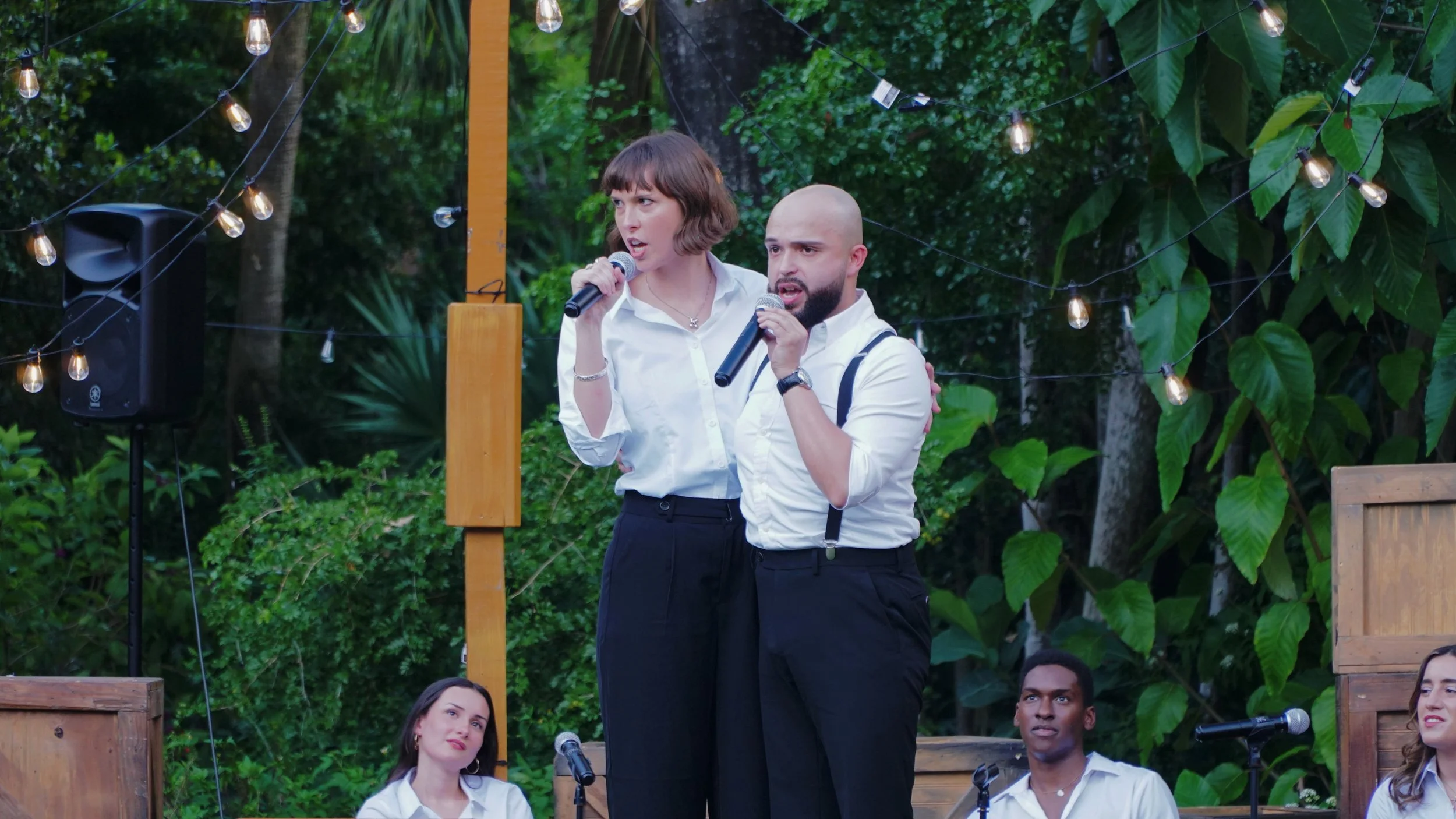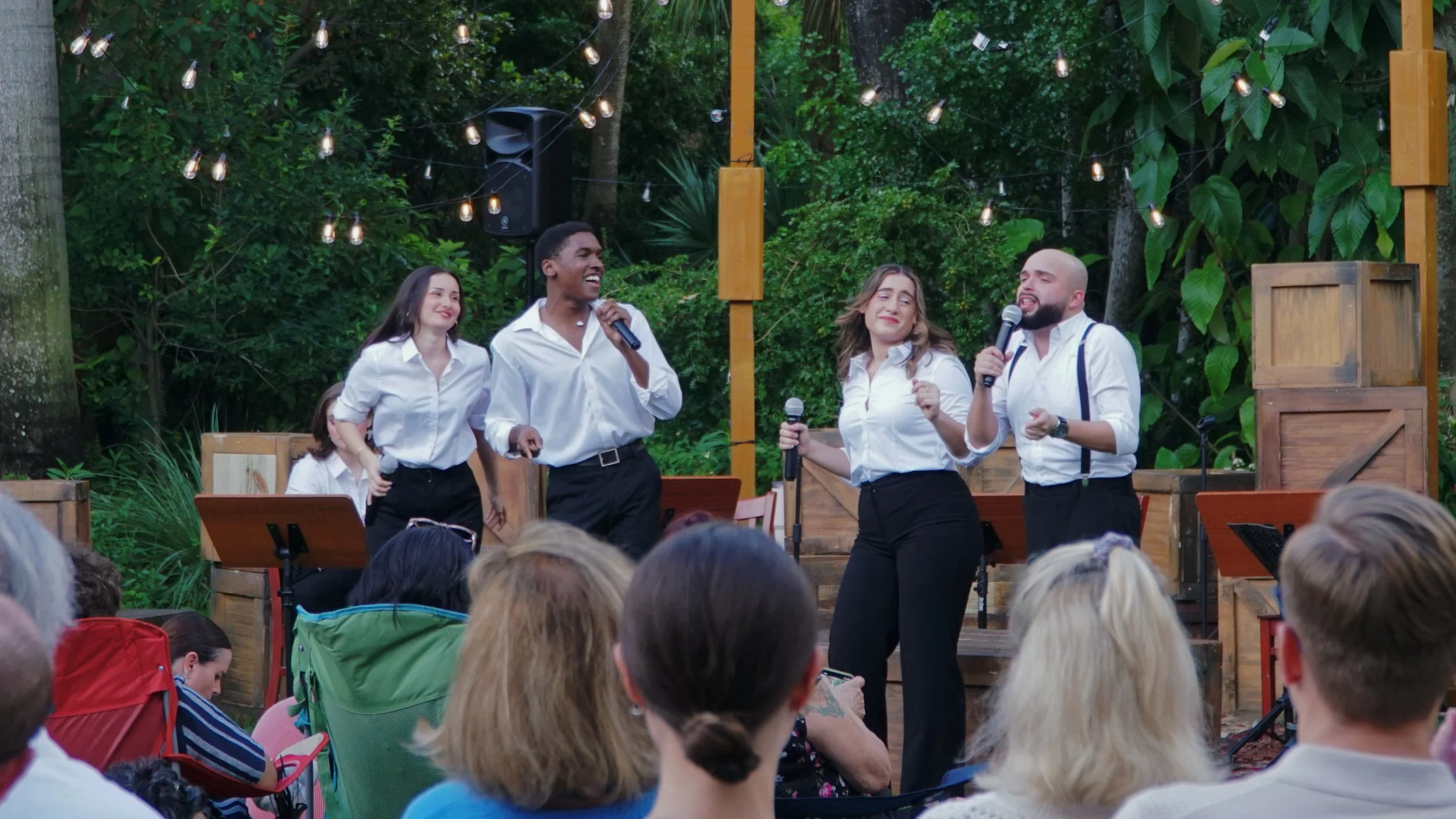Breaking Barriers in Ballet: How Area Stage’s Inspire Theatre Project Is Redefining Ballet Education for Neurodiverse Dancers
RAD-Certified Instructor & Tutor, Irma Becker, guides neurodiverse dancers through a ballet barre exercise.
Area Stage’s Inspire Theatre Project (ITP) is home to one of the only inclusive ballet programs in the world that teaches the official Royal Academy of Dance (RAD) curriculum, led by our certified RAD instructor & Tutor, Irma Becker.
This isn’t a “ballet-inspired” adaptive class. This is true RAD training, the same internationally respected syllabus taught in more than 80 countries, thoughtfully adapted so dancers of all abilities can participate, progress, and achieve measurable artistic growth.
Instructor Irma Becker gives personalized feedback and encouragement to student Jorge Guerrero during class.
What Makes This Program Unique Worldwide?
One of the only inclusive programs worldwide using the authentic RAD syllabus and offer internationally recognized certification
Instruction led by an officially certified RAD Teacher & Tutor
The same structured, graded curriculum adapted to each dancer’s skill level
Focus on technique, musicality, artistry, and personal progress
Where neurodiverse dancers develop discipline, confidence, and a strong work ethic through ballet training.
At Area Stage, access to the arts is about ensuring that every dancer can access the same level of artistic excellence with all the support they need to succeed.
How Can You Contribute To Our Unique Programming?
Area Stage’s Give Miami Day fundraiser directly supports programs like this.
ITP’s RAD Special Adaptive Program exists because the community makes it possible.
Your Give Miami Day support helps us:
🩰 Provide scholarships for students who need financial assistance
🎓 Train more dancers using certified and adaptive techniques
🎶 Expand inclusive performing arts opportunities beyond ballet
💫 Keep proving what is possible when expectation meets accessibility
A donation to Area Stage isn't just a gift, it’s a belief that every dancer deserves the chance to grow, train, and shine.
To take part in the life-changing work we do at Area Stage,
🔗 Donate during Give Miami Day — or early giving
🔗 Start a Champion fundraising page and help us spread the word
🔗 Share this post so more people learn about this powerful program
Every act inspires.
Every gift creates access.
Every dancer belongs in the story.
Learn more or support the program here:
🔗 areastageconservatory.org/itp
Broadway in the Botanical Delighted Audiences Once Again
(Left) Annette Rodriguez, Grace Suarez, Gabriela Hernandez, Imran Hylton, Katie Duerr, John Luis Mazuelos
On Saturday, September 27th, Area Stage returned to the Miami Beach Botanical Garden with the Fall edition of Broadway in the Botanical. Building on its sold-out spring debut, this second installment welcomed audiences back for an evening of live theatre under the stars.
Guests arrived with picnic blankets, folding chairs, and refreshments, ready to enjoy a night of music in the garden’s lush outdoor setting. The event featured a brand-new, family-centered setlist performed by a blend of local professional and aspiring artists, filling the garden with beloved Broadway favorites.
Katie Duerr (left) and John Luis Mazuelos (right)
The unique atmosphere of Broadway in the Botanical came not only from the performances, but also from the shared sense of community. Families, friends, and theatre lovers gathered together, transforming the garden into a lively hub of celebration. With twinkling lights above and the sounds of musical theatre classics in the air, the evening struck a balance between festive and intimate.
Supported in part by the Miami Beach Cultural Arts Council, Broadway in the Botanical is quickly establishing itself as one of Miami’s newest cultural traditions. By pairing the vibrancy of live performance with the beauty of the garden, the series offers audiences a refreshing way to experience theatre and continues to grow with each season.
(Left) Grace Suarez, Imran Hylton, Gabriela Hernandez, John Luis Mazuelos
Up next at Area Stage, don’t miss Giancarlo Rodaz’s critically acclaimed immersive production of Annie, running December 12 - 28, 2025. Step into a 1930s speakeasy and experience the classic Tony Award-winning musical reimagined for the whole family, Miami’s holiday event of the season.
A Celebration and Scholarship Unveiling in Honor of Esteemed Broadway Producer Arthur Whitelaw (Miami's Community Newspapers)
Area Stage will hold a heartfelt life celebration honoring the late Broadway Producer Arthur Whitelaw who was also an esteemed Area Stage’s Board of Advisors member. The cocktail reception will take place on Wednesday, September 24th, 2025, at Area Stage’s Black Box Theatre and will be followed by the unveiling of a new scholarship named after him. If you would like to attend, please use the following RSVP link here.
The Arthur Whitelaw Grant, is an annual grant that will sponsor college auditions for aspiring actors in the pursuit of a theatre degree. In lieu of flowers, the family warmly requests that guests consider making donations to support the grant fund.
Following this tribute in Miami, a separate event in Mr. Whitelaw’s honor will be held on Tuesday, October 21st, 2025, at Sardi’s in New York City.
MIAMI EVENT DATE: September 24th, 2025, 7 PM
LOCATION: Area Stage Black Box Theater, 5701 Sunset Dr Suite 286, South Miami, FL 33143
ABOUT ARTHUR WHITELAW
Arthur Whitelaw enjoyed a prolific 61-year career as a producer, director, writer, and actor, earning every major industry honor—including the Tony, Oscar, Emmy, Olivier, and Drama Desk Awards—and discovering stars such as Liza Minnelli and Christopher Walken in his first production, Best Foot Forward. His acclaimed works spanned the globe, with notable stage productions like You’re a Good Man, Charlie Brown, Butterflies Are Free, Minnie’s Boys, Snoopy!!!, and Sweet Sue; Emmy-nominated and Emmy-winning television specials including You’re a Good Man, Charlie Brown (NBC) and Celebrating Gershwin (PBS/BBC); and films such as Butterflies Are Free, Tom Sawyer, and Huckleberry Finn. He completed his autobiography, Working for Peanuts, and last year donated his extensive theatre archives to the Library of Congress. A devoted champion of the arts, Whitelaw reconnected with John and Maria Rodaz of Area Stage, directing Snoopy!!! and co-writing the new musical Letters from Camp about the children of the Holocaust. His enduring wish was to see the professional arm of Area Stage flourish and for the community to support that vision.
ABOUT AREA STAGE
Founded in 1989 by John and Maria Rodaz, Area Stage began as one of the pioneers of the Miami Beach arts community on Lincoln Road. Now celebrating 36 years of artistic excellence, this non-profit theater company has become one of South Florida’s most influential cultural institutions, dedicated to artistic innovation, education, and accessibility to the arts. In addition to its acclaimed Mainstage productions, Area Stage houses a world-class Conservatory, providing professional training to hundreds of young aspiring artists each year. The company is also home to the Inspire Theatre Project, which offers meaningful performance opportunities to individuals with intellectual and developmental disabilities. Recently, Area Stage was recognized with the 2024 Miami Dade Favorites Silver Award and honored by Miami-Dade County with a Proclamation designating June 6, 2025, as Area Stage Inc. Day in celebration of the Inspire Theatre Project’s outstanding contributions to the community—a true testament to the company’s lasting impact. Committed to pushing artistic boundaries, Area Stage continues to provide extraordinary theatrical experiences to the Miami community and beyond.
Area Stage Earns Two Carbonell Award Nominations for Tarzan
Area Stage is proud to announce that our immersive musical production of Tarzan has earned two nominations at the 48th Annual Carbonell Awards, one of South Florida’s most prestigious recognitions in the performing arts.
The nominations include:
Outstanding Direction, Musical – Giancarlo Rodaz
Outstanding Music Direction – Katie Duerr
The winners will be announced at the glittering ceremony on November 17 at FAU’s University Theatre in Boca Raton.
About Tarzan
Our immersive production of Tarzan brought Disney’s beloved story to life like never before. Under the visionary direction of Giancarlo Rodaz, audiences were transported into the heart of the jungle, surrounded by sweeping visuals, acrobatic performances, and a soundtrack featuring Phil Collins’ iconic music under the musical direction of Katie Duerr.
The show ran from July 17 to August 3, 2025, at the Area Stage Black Box Theatre and received rave reviews from audiences for its creativity, talent, and originality.
A Big Thank You
We are incredibly grateful to everyone who came to experience Tarzan and supported our cast, crew, and creative team. These nominations are a testament to the hard work, passion, and artistry that go into every Area Stage production.
We look forward to celebrating on November 17 at FAU and continuing to bring bold, immersive theatre experiences to our community.

